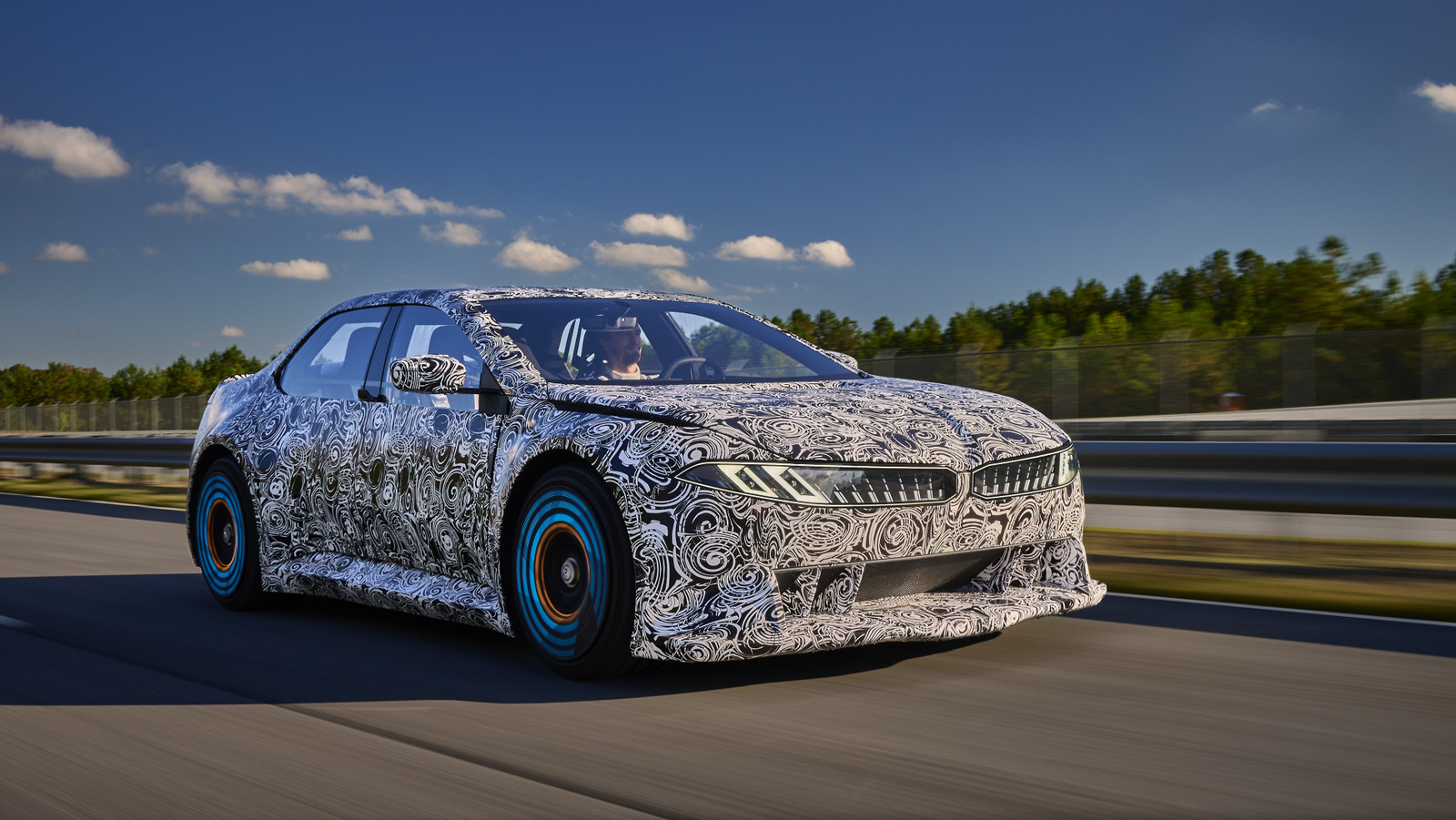
Driving enthusiasts have long expressed skepticism about the viability of electric cars ever evoking the same emotion, character, and driving dynamics of the Earth-warming cars of yore. Some models like the Hyundai Ioniq 5 N do a good job of bringing some dynamics to the EV party, but BMW’s new central computer aims to take our current understanding of EV driving inputs, drivetrain efficiency, and immense power to the next level. The computer is dubiously named the “Heart of Joy,” and it was developed in-house by BMW to integrate controls for drivetrain, braking, energy recuperation, charging, and steering into one unit that processes information 10-times faster than previous systems.
BMW, the company that once operated under the slogan “The Ultimate Driving Machine,” used to almost unquestionably produce the best-driving cars in whatever market segment it entered. That focus has shifted in recent years, but driving enthusiasts would doubtlessly love for the “Heart of Joy” computing system to inject a healthy dose of driver involvement into the EV future. To prove its potential, BMW plopped it into a camouflaged Neue Klasse prototype that also happens to be saddled with 13,269 pound-feet of electric torque and called it the Vision Vehicle. Alongside that prodigious torque figure, Heart of Joy in the Vision Vehicle (cringe) increases regenerative braking efficiency by a significant 25 percent, meaning 98 percent of drivers won’t ever actually use the friction brakes.
There are a total of four central control units in the Vision Vehicle, but the Heart of Joy’s high-performance unit controls acceleration, braking, vehicle stabilization, steering, and charging functions. This centralization allows the computer, and thus the car, to react quicker to driver inputs, wheel slip, and braking behavior to ensure a consistent, intuitive driving experience. The other “super brains” are for automated driving, infotainment, vehicle access, and interior and exterior lighting.
What does 13,000 pound-feet of torque feel like from inside the car?
I went for a ride in the Vision Vehicle and experienced its powerful brake regen and 13,000 pound-feet of torque first-hand, and it’s mighty impressive. Having seen other bonkers EVs like the Ford Supervan race Pikes Peak International Hill Climb, the Vision Vehicle is similar; tons of high-pitched EV motor whine, easily overpowered tires, and oodles of power. It’s definitely a more exciting experience than you’d get in say a Toyota bZ4x, but from the back seat it still didn’t live up to the time that I sat in the back of Tanner Foust’s VW Passat Drift Taxi at the Optima Batteries SEMA booth in my past. Even with all-wheel drive, the Vision Vehicle struggles for traction and overpowers its road tires immediately. On the rare occasion that it hooks up, you’re thrown back into your seat, but then the next corner arrives and the fight for traction begins again. It does feature some nifty wheels that light up different colors to denote when the vehicle is under acceleration, regenerative braking, and using friction brakes, but there’s no word on if those will reach production.
When will we see it in road cars?
Sadly but unsurprisingly, the Vision Vehicle and its 13,000 pound-feet of torque are not going into production. However, all upcoming BMW Neue Klasse vehicles will benefit from the Heart of Joy. BMW plans to begin production of the first Neue Klasse model, the “taller electric model” (likely an SUV) later this year. The Vision Vehicle, formally named the Vision Driving Experience, will shed its camouflage at the Shanghai Auto Show in April.

